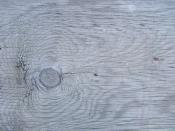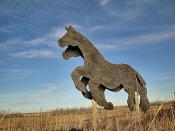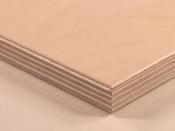Timber
Timber contains a great deal of moisture when felled, which makes it almost impossible to work. It also shrinks as it dries out and often cracks. So, the wood gets seasoned. Seasoning involves stacking the wood for long periods in dry air to allow the moisture to evaporate.
Even after seasoning however, wood can still warp and twist when in use. This happens because wood is hygroscopic - it absorbs water from a moist atmosphere (causing it to expand) and loses water in a dry atmosphere (causing it to contract). A timber, which is prone to this problem, is said to be unstable. Paints and other surface treatment reduce this effect, but do not eliminate.
Dry wood resists decay, and is less likely to be infested by woodworm and beetle. It might be damaged by rain and heat then. It is also cheap and recyclable and you can get it from anywhere.
I give it 4.
Plywood
Plywood is made up of three or more thin layers (or veneers) of wood, glued together. The veneers are arranged so that their grains run in alternate directions. Since wood is much stronger along the grain than across it, this gives the material uniform strength. This can be demonstrated with a straw model.
Although very 'stable', plywood is not immune to warping, since the tensions in the veneers are never equal. Further, if one side of the board gets wet, or is heated, the board will warp as the outer veneers expand or contract.
A major advantage of plywood over natural timber is that it is relatively cheap and is available in much larger sheets than natural woods, and in a wide range of thicknesses. Decorative hardwood veneers can also be attached to a cheaper core or base material. This allows for...



Good
Needs sources.
Concise. BUT Plagiarism is obviously present. Aren't you gonna credit people???? hmmm??
0 out of 0 people found this comment useful.